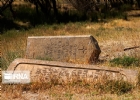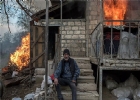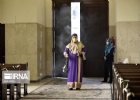
-
2026 yılı size ve tüm sevdiklerinize önce sağlık, sonra huzur ve tükenmeyen mutluluklar getirsin. He
-
Türkiye ile Ermenistan Arasında İki Ülkenin Resmi Pasaport Hamilleri için Vize Kolaylaştırma Kararı
-
Ermenistan-Türkiye arasında ücretsiz e-vize dönem
-
Türkiye ile Ermenistan’dan Vize Kolaylaştırma Kararı
-
Türkiye – Ermenistan Sınırı 1 Ocak’a Kısmen Açılıyor
English :
17 Ocak 2023
![]()
![]()
![]()
The landlocked mountainous region of Nagorno-Karabakh is the subject of an unresolved dispute between Azerbaijan, in which it lies, and its ethnic Armenian majority, backed by neighbouring Armenia.
In 1988, towards the end of Soviet rule, Azerbaijani troops and Armenian secessionists began a bloody war which left the de facto independent state in the hands of ethnic Armenians when a truce was signed in 1994.
Negotiations have so far failed to produce a permanent peace agreement. Russia, France and the US co-chair the OSCE's Minsk Group, which had been attempting to broker an end to the dispute but this has been thrown into doubt by Russia's 2022 invasion of Ukraine, The EU is also seeking to aid a peaceful resolution of the issue.
NAGORNO-KARABAKH/ARTSAKH: FACTS
Capital: Stepanakert
Area: 3,170 sq km
Population: 120,000
Languages: Armenian, Russian
Life expectancy: 75 years[A man walks along a street during the ongoing military conflict between Armenia and Azerbaijan over the breakaway region of Nagorno-Karabakh, in the disputed province's capital of Stepanakert] IMAGE SOURCE,GETTY IMAGESThe conflict has roots dating back well over a century into competition between Christian Armenian and Muslim Turkic and Persian influences.
Populated for centuries by Christian Armenian and Turkic Azeris, Karabakh became part of the Russian empire in the 19th Century.
The two groups lived in relative peace, although acts of brutality on both sides in the early 20th Century live on in the popular memory.
Soviet rule
After the end of World War One and the Bolshevik revolution in Russia, the new Soviet rulers, as part of their divide-and-rule policy in the region, established the Nagorno-Karabakh Autonomous Region, with an ethnic Armenian majority, within the Soviet Socialist Republic of Azerbaijan in the early 1920s.
With the break-up of the Soviet Union, in late 1991, Karabakh declared itself an independent republic, and as Soviet control loosened the smouldering Armenian-Azeri frictions exploded into a full-scale war.
First Karabakh war
During the fighting between 1992 and 1994, up to 30,000 people are estimated to have lost their lives. Armenians gained control of the region.
They also pushed on to occupy Azerbaijani territory outside Karabakh, creating a buffer zone around Lachin, linking Karabakh and Armenia.
More than one million people fled their homes during the fighting. The ethnic Azeri population - about 25% of the total before the war - fled Nagorno-Karabakh and Armenia while ethnic Armenians fled the rest of Azerbaijan.[Nagorno-Karabakh's main city Stepanakert] IMAGE SOURCE,GETTY IMAGES
Image caption,
Stepankert is the largest city and de facto capital of the regionCeasefire
In 1994, a Russian-brokered ceasefire was signed leaving Karabakh as well as swathes of Azeri territory around the territory in Armenian hands.
In a 2017 referendum, voters approved a new constitution, turning the government from a semi-presidential to a fully presidential one. The territory changed its from "Nagorno Karabakh Republic" to "Republic of Artsakh", though both remain official names.
Karabakh is the Russian rendering of an Azeri word meaning "black garden", while Nagorno is a Russian root meaning "mountainous". The ethnic Armenians name for the region "Artsakh", is an ancient Armenian name for the area.
Its de-facto status has not been internationally recognised.
While Armenia itself has never officially recognised the region's independence, it has become its main financial and military backer and the breakaway territory functions as a de facto part of Armenia.
Second Karabakh war
From 1994 a simmering stalemate prevailed - though punctuated by armed clashes - until September 2020, when Azerbaijan launched an offensive that recaptured territory around Karabakh.
Some 3,000 Azerbaijani soldiers and 4,000 Armenian soldiers were killed in six weeks of fighting before another Russian-brokered ceasefire.
Armenian forces agreed to return to Azerbaijan all occupied territory outside of the former Soviet Nagorno-Karabakh Autonomous Oblast.[Nagorno-Karabakh map]Russian peacekeepers were deployed to monitor a new Moscow-brokered ceasefire, and also to ensure safe passage through the region of Lachin - the so-called "Lachin corridor" - which separates Nagorno-Karabakh from Armenia.
Fighting broke out between Armenian and Azerbaijani troops along the Armenia-Azerbaijan border in September 2022, with about 50 soldiers on each side killed in the clashes.
In 1988, towards the end of Soviet rule, Azerbaijani troops and Armenian secessionists began a bloody war which left the de facto independent state in the hands of ethnic Armenians when a truce was signed in 1994.
Negotiations have so far failed to produce a permanent peace agreement. Russia, France and the US co-chair the OSCE's Minsk Group, which had been attempting to broker an end to the dispute but this has been thrown into doubt by Russia's 2022 invasion of Ukraine, The EU is also seeking to aid a peaceful resolution of the issue.
NAGORNO-KARABAKH/ARTSAKH: FACTS
Capital: Stepanakert
Area: 3,170 sq km
Population: 120,000
Languages: Armenian, Russian
Life expectancy: 75 years[A man walks along a street during the ongoing military conflict between Armenia and Azerbaijan over the breakaway region of Nagorno-Karabakh, in the disputed province's capital of Stepanakert] IMAGE SOURCE,GETTY IMAGESThe conflict has roots dating back well over a century into competition between Christian Armenian and Muslim Turkic and Persian influences.
Populated for centuries by Christian Armenian and Turkic Azeris, Karabakh became part of the Russian empire in the 19th Century.
The two groups lived in relative peace, although acts of brutality on both sides in the early 20th Century live on in the popular memory.
Soviet rule
After the end of World War One and the Bolshevik revolution in Russia, the new Soviet rulers, as part of their divide-and-rule policy in the region, established the Nagorno-Karabakh Autonomous Region, with an ethnic Armenian majority, within the Soviet Socialist Republic of Azerbaijan in the early 1920s.
With the break-up of the Soviet Union, in late 1991, Karabakh declared itself an independent republic, and as Soviet control loosened the smouldering Armenian-Azeri frictions exploded into a full-scale war.
First Karabakh war
During the fighting between 1992 and 1994, up to 30,000 people are estimated to have lost their lives. Armenians gained control of the region.
They also pushed on to occupy Azerbaijani territory outside Karabakh, creating a buffer zone around Lachin, linking Karabakh and Armenia.
More than one million people fled their homes during the fighting. The ethnic Azeri population - about 25% of the total before the war - fled Nagorno-Karabakh and Armenia while ethnic Armenians fled the rest of Azerbaijan.[Nagorno-Karabakh's main city Stepanakert] IMAGE SOURCE,GETTY IMAGES
Image caption,
Stepankert is the largest city and de facto capital of the regionCeasefire
In 1994, a Russian-brokered ceasefire was signed leaving Karabakh as well as swathes of Azeri territory around the territory in Armenian hands.
In a 2017 referendum, voters approved a new constitution, turning the government from a semi-presidential to a fully presidential one. The territory changed its from "Nagorno Karabakh Republic" to "Republic of Artsakh", though both remain official names.
Karabakh is the Russian rendering of an Azeri word meaning "black garden", while Nagorno is a Russian root meaning "mountainous". The ethnic Armenians name for the region "Artsakh", is an ancient Armenian name for the area.
Its de-facto status has not been internationally recognised.
While Armenia itself has never officially recognised the region's independence, it has become its main financial and military backer and the breakaway territory functions as a de facto part of Armenia.
Second Karabakh war
From 1994 a simmering stalemate prevailed - though punctuated by armed clashes - until September 2020, when Azerbaijan launched an offensive that recaptured territory around Karabakh.
Some 3,000 Azerbaijani soldiers and 4,000 Armenian soldiers were killed in six weeks of fighting before another Russian-brokered ceasefire.
Armenian forces agreed to return to Azerbaijan all occupied territory outside of the former Soviet Nagorno-Karabakh Autonomous Oblast.[Nagorno-Karabakh map]Russian peacekeepers were deployed to monitor a new Moscow-brokered ceasefire, and also to ensure safe passage through the region of Lachin - the so-called "Lachin corridor" - which separates Nagorno-Karabakh from Armenia.
Fighting broke out between Armenian and Azerbaijani troops along the Armenia-Azerbaijan border in September 2022, with about 50 soldiers on each side killed in the clashes.
Bu haber bbc kaynağından gelmektedir.
Haber metninde yer alan görüşler haber kaynağı (bbc) ve yazarına ait olup,
bolsohays.com sitesi haber hakkında herhangi bir görüş üstlenmemektedir.
Opinions expressed are those of the author(s)-(bbc). They do not purport to reflect the opinions or views of bolsohays.com
Diğer Haberler
-
Azerbaijan-Armenia normalization push set to carry into 2026
-
Pashinyan Urges Karabakh Armenians to Embrace Armenian Citizenship for Security
-
Armenia adopts universal healthcare insurance
-
Armenia pays mothers $1,300 for each child born
-
Photography of Ancient Armenia Featured in New 2026 Wall Calendar
-
Pope asks for prayers ahead of visit to Türkiye and Lebanon
-
Armenia will step up its efforts toward membership in the European Union in 2026
-
Economy Minister discussed rebranding of Armenian brandy with producers
-
Aleppo - Yerevan - Aleppo
-
Mirzoyan: Armenia citizens should live in Armenia, Azerbaijan citizens should live in Azerbaijan
-
Armenia will officially receive the European Union`s visa liberalization action plan in the coming
-
Armenia might achieve visa-free travel to the European Union within two years
Foto Galeri Tüm Galeriler
Video Galeri Tüm Videolar
-
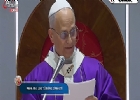
Papa XIV. Leo`nun Türkiye Ziyareti | Volkswagen Arena Efkaristiya Ayini
-
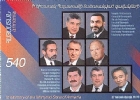
Parliament Shooting in Armenia, October 27, 1999
-

Albert - Brave Heart | ???????? Armenia | Official Music Video | Junior Eurovision 2025
-
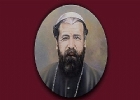
Սրբադասման Սուրբ Պատարագ եւ Հրեշտակ Տեառն Մարեմեան աղօթք 19 հոկտեմբեր 2025 – Լեւոն ԺԴ. Քահանայապետ
Anket Tüm Anketler
Günün Sözü
Մարդիկ կը մեոնին, բայց ճշմարտութիւնը կը մնայ յաւիտեան։











